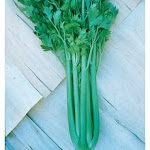Cauliflower is a long season vegetable that, under the right conditions, can be successfully grown in the north. The key is to use cauliflower transplants that take 70 days or less to mature ,and to grow them in a fertile, sunny location.
Cauliflower Information
Vegetable Type: Annual
Name: Brassica oleracea botrytis
Genus: Cabbage Family
How to Start Cauliflower from Seed
Seed Starting Supplies
- Trays/Pots
- Organic Potting Soil
- Cauliflower Seed
- Small Watering Can
- Sunny Location Indoors
Directions
(start indoors 4-6 weeks before average spring frost)
1. Fill trays ¾ way full with organic potting mix
2. Follow spacing requirements on back of cauliflower seed packet when sowing in trays, or 1-3 seeds per pot
3. Sprinkle 1/8” of soil over seeds
4. Water lightly
5. Keep seed tray in a sunny location and keep well watered
How to Grow Cauliflower Outdoors in the North
When: When temps are consistently 55°F or warmer in spring
Soil Type: Very fertile, well-draining soil (amend with finished compost/composted manure)
Spacing: Plant cauliflower 18-24” apart in rows
Light: Full sun
Watering: Keep consistently watered
Weeding: Weed consistently
Mulching: Apply mulch to reduce weeds and retain moisture
Fertilizing: Add compost to bed before planting and side dress plants with organic fertilizer high in nitrogen 3 weeks later
Care: For cauliflower varieties that are not self blanching, wrap leaves over head and tie at top to blanch when heads are almost full size (check seed packet for size). Check cauliflower a week to 12 days after tying, at which time they should be ready for harvest.
Common Cauliflower Pests and Diseases in the North
Pests
Harlequin Bugs: Look for black and white eggs on undersides of leaves as well as nymphs pale orange or black in color with spots. Adults are red and black spotted and crest-like in shape. They leave behind wilted, browning spots on leaves, eventually killing the plant. Handpick/spray with soapy water to control organically.
Cabbage Worms: Look for green worms and white cocoons. Handpick all worms and cocoons, drowning in soapy water. Use floating row covers to prevent pests.
Aphids: Look for tiny, pear-shaped yellow, green or brown insects with long antennae and legs. Treat by spraying with a mixture of 1 tablespoon vegetable oil and ½ teaspoon of liquid soap mixed into a quart of water (shake well before using).
Diseases
Black Rot: Look for yellowing leaves eventually dying and falling off plants. Plants may also develop black spots/veins caused by bacteria. Plant resistant varieties and do not plant where members of the same family have grown in the past 2 years.
Clubroot: Caused by a fungus. Stop fungus from spreading by digging up and removing all cabbage roots and tendrils. Place in plastic bags and dispose - do not add to compost or fungus may be left behind. Test soil pH and raise above 7.2 if need be.
How to Harvest Cauliflower
- Look for compact heads that are tightly balled and firm to the touch. Color will vary depending on the cauliflower variety planted.
- Cleanly slice heads just above ground level leaving a few leaves attached to the head (offers a little protection).
Tips for Storing Cauliflower
- Cauliflower lasts for about a week when refrigerated
- Pickle or freeze for longer storage
Types of Cauliflower
Open Pollinated: Turns white on it’s own without wrapping the head with outer leaves of plant and tying.
White: Most common variety; easy to find in produce sections of the store. Produces all white heads.
Purple: All purple heads are mild in taste, typically turning green after cooking.
Orange: Produces orange heads full of beta carotene. This type is sometimes called Cheddar cauliflower.
Broccoflower or Green: Produces green heads. This type is a cross between broccoli and cauliflower.
Varieties of Cauliflower Best for the North
Orange Cauliflower Varieties
Cheddar Hybrid: Newer variety. Produces 4-7” domed heads orange in color. Full of beta carotene. Easy to grow. One of the best hybrid varieties for the north. 68 days from transplants.
White Cauliflower Varieties
Self Blanche: Self blanching variety. Produces fine grained, smooth heads with tightly packed leaves. Great for pickling/freezing. 52 days from transplants.
Snow Crown Hybrid: Vigorous variety. Produces 2 lb. heads 7-8” in diameter. Easy to grow. 55 days from transplants.
Freemont: Adaptable variety. Produces white heads uniform in size. Self-blanching. 62 days from transplants.
Candid Charm Hybrid: High-yielding variety. Produces dense heads and thick wrapper leaves for extra protection. Very flavorful. 65 days from transplants.
Snowball Y Improved: Short season variety. Produces 6” heads surrounded by curled leaves. 65 days from transplants.
Bishop: Adaptable variety. Produces uniform heads with leaves that are self covering. Strong and vigorous plants. 65 days from transplants.
Related Articles
How to Blanch and Freeze Vegetables
How to Make Your Own Seed Tapes






